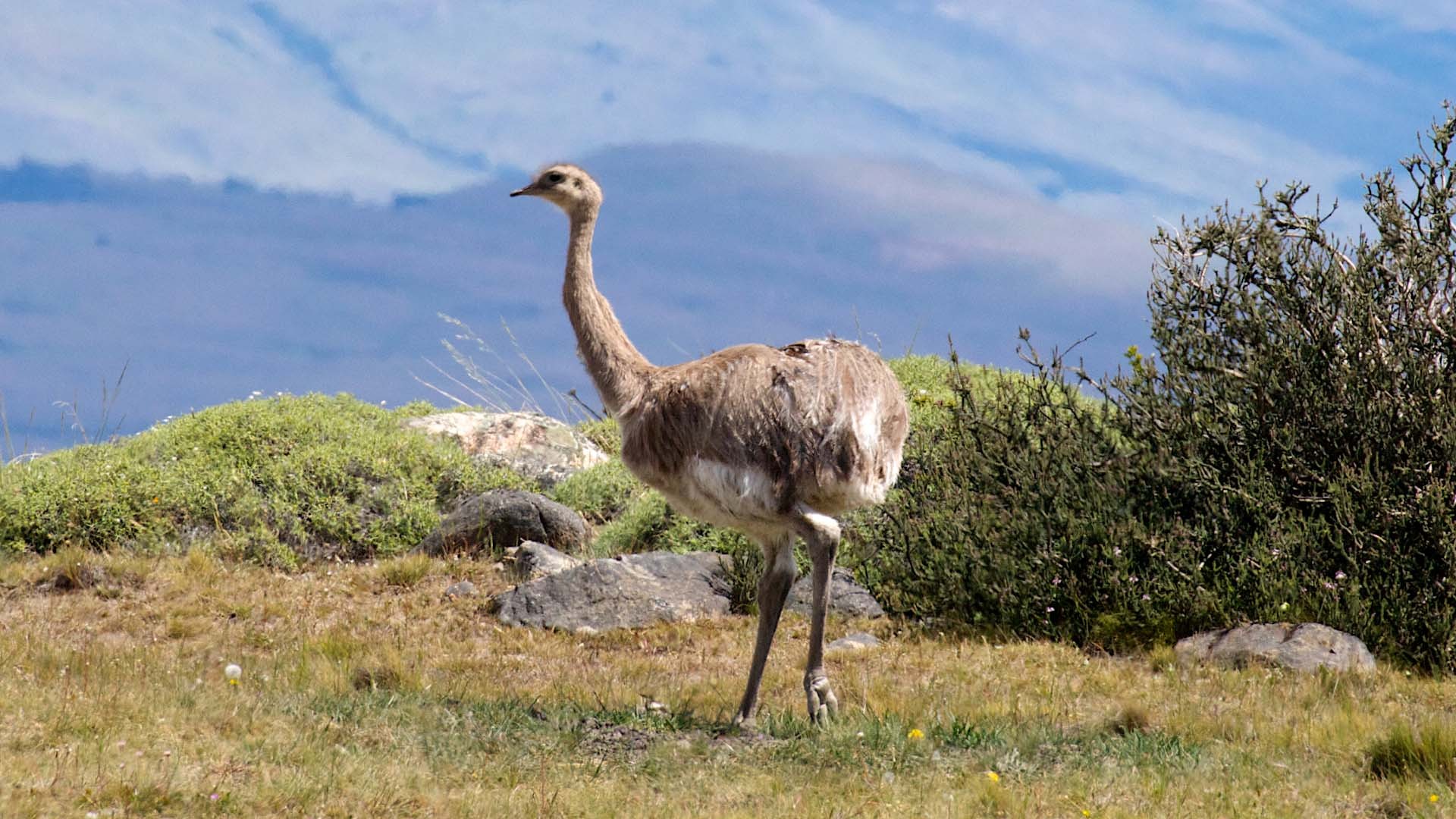Lesser Rhea
A species of Nandu, Also known as Darwin's Rhea Scientific name : Rhea pennata Genus : Nandu
Lesser Rhea, A species of Nandu
Also known as:
Darwin's Rhea
Botanical name: Rhea pennata
Genus: Nandu
Content
Description General Info
 Photo By Christoph Strässler , used under CC-BY-SA-2.0 /Cropped and compressed from original
Photo By Christoph Strässler , used under CC-BY-SA-2.0 /Cropped and compressed from original Description
The lesser rhea stands at 90 to 100 cm (35–39 in) tall. Length is 92 to 100 cm (36–39 in) and weight is 15 to 28.6 kg (33–63 lb). Like most ratites, it has a small head and a small bill, the latter measuring 6.2 to 9.2 cm (2.4 to 3.6 in), but has long legs and a long neck. It has relatively larger wings than other ratites, enabling it to run particularly well. It can reach speeds of 60 km/h (37 mph), enabling it to outrun predators. The sharp claws on the toes are effective weapons. Their feathers are similar to those of ostriches, in that they have no aftershaft. Their plumage is spotted brown and white, and the upper part of their tarsus is feathered. The tarsus is 28 to 32 cm (11 to 13 in) long and has 18 horizontal plates on the front. 
Size
1 m
Nest Placement
Ground
Habitat
Darwin's rhea lives in areas of open scrub in the grasslands of Patagonia and on the Andean plateau (the Altiplano), through the countries of Argentina, Bolivia, Chile, and Peru. All subspecies prefer grasslands, brushlands and marshland. However, the nominate subspecies prefers elevations less than 1,500 m (4,900 ft), where the other subspecies typically range from 3,000 to 4,500 m (9,800–14,800 ft), but locally down to 1,220 m (4,000 ft) in the south. 
Dite type
Omnivorous
General Info
Feeding Habits
Bird food type
Behavior
The lesser rhea is mainly a herbivore, with the odd small animal (lizards, beetles, grasshoppers) eaten on occasion. It predominately eats saltbush and fruits from cacti, as well as grasses. They tend to be quiet birds, except as chicks when they whistle mournfully, and as males looking for a female, when they emit a booming call. The males of this species become aggressive once they are incubating eggs. The females thus lay the later eggs near the nest, rather than in it. Most of the eggs are moved into the nest by the male, but some remain outside, where they rot and attract flies. The male, and later the chicks, eat these flies. The incubation period is 30–44 days, and the clutch size is from 5–55 eggs. The eggs are 87 to 126 mm (3.4–5.0 in) and are greenish yellow. Chicks mature by three years of age. Outside the breeding season, Darwin's rhea is quite sociable: it lives in groups of from 5 to 30 birds, of both sexes and a variety of ages. 
Distribution Area
Darwin's rhea lives in areas of open scrub in the grasslands of Patagonia and on the Andean plateau (the Altiplano), through the countries of Argentina, Bolivia, Chile, and Peru. All subspecies prefer grasslands, brushlands and marshland. However, the nominate subspecies prefers elevations less than 1,500 m (4,900 ft), where the other subspecies typically range from 3,000 to 4,500 m (9,800–14,800 ft), but locally down to 1,220 m (4,000 ft) in the south. 
Species Status
Darwin's rhea is categorized as least concern by the IUCN. The former southern nominate subspecies remains relatively widespread and locally fairly common. Its range is estimated at 859,000 km (332,000 sq mi). The situation for the two former northern subspecies is more worrying, with their combined population estimated as being possibly as low as in the hundreds. However, they are classified as Rhea tarapacensis by the IUCN, which regards it as being near threatened, with the primary threats being hunting, egg-collecting, and fragmentation of its habitat due to conversion to farmland or pastures for cattle-grazing. 